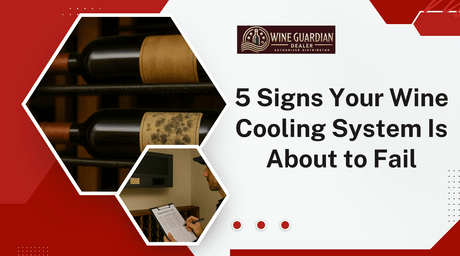
5 Signs Your Wine Cooling System Is About to Fail
Don’t wait for a costly surprise. Wine Guardian Dealer breaks down the top 5 signs your wine cooling system may be failing — and how to fix it before damage...
Jim Hopper
In Stock & Ready to Ship – Order Your Wine Cooling System Today!
Free Wine Cellar Expert Consultation | 📞 Call 1-800-260-1712
Start with a free expert consult—cooling system sizing, racking options, and no upsells.
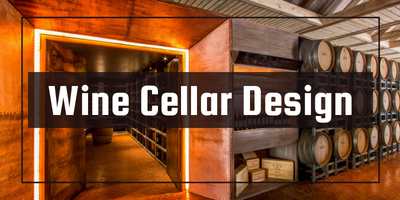
Build your dream wine cellar—without costly mistakes or guesswork.
By Jim Hopper, Wine Cooling Expert
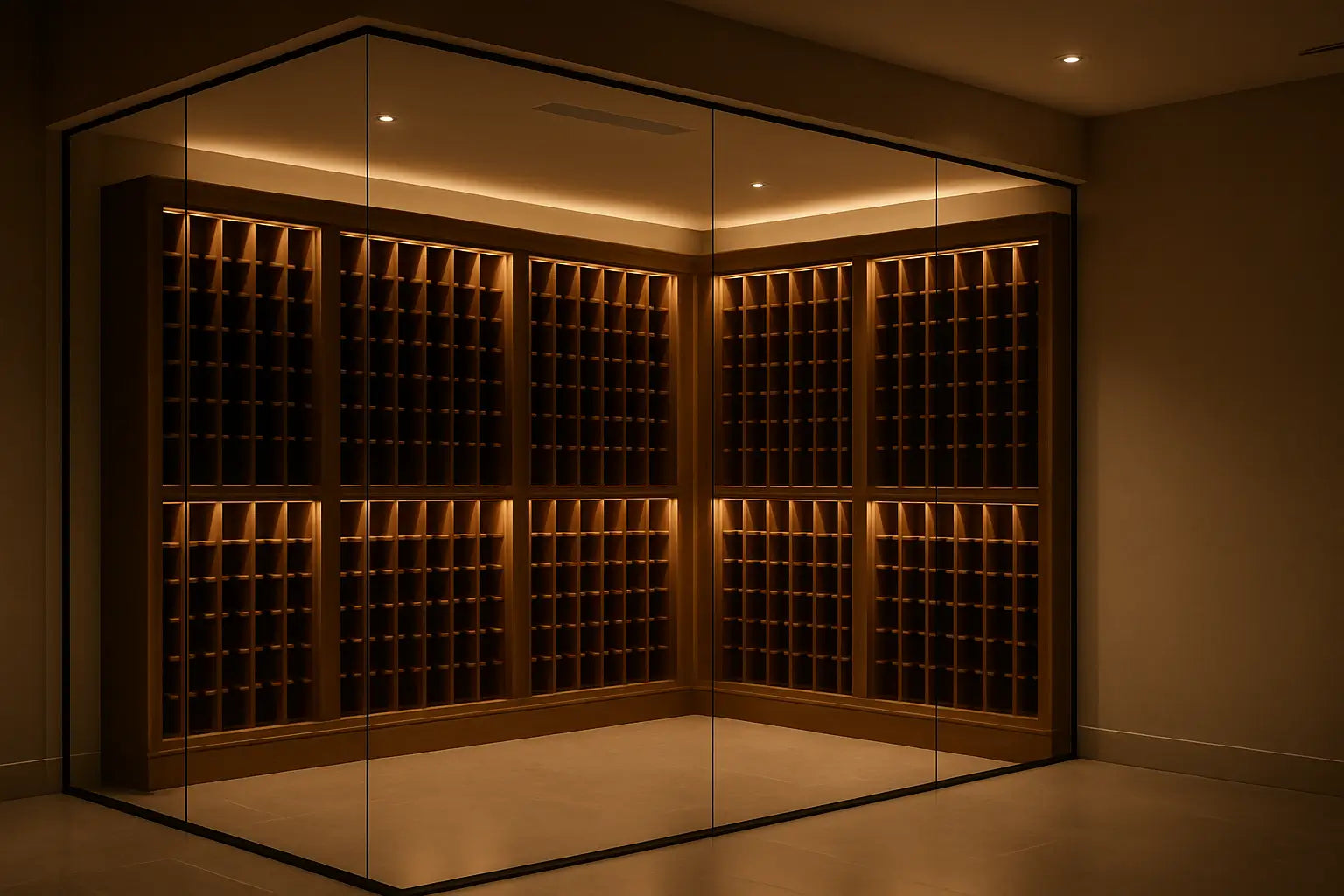
Glass-walled wine cellars are stunning — they elevate kitchens, lounges, and dining spaces into gallery-style showcases. But when it comes to climate control, all that glass creates a real challenge.
Glass is a poor insulator. It transfers heat rapidly and lets UV light into the space, increasing the cooling load on your system. And unlike solid walls, glass doesn’t allow for vapor barriers or thick insulation layers.
If you’re just starting your cellar plan, review our Wine Cooling Systems Overview to understand how insulation, glass, and climate interact.
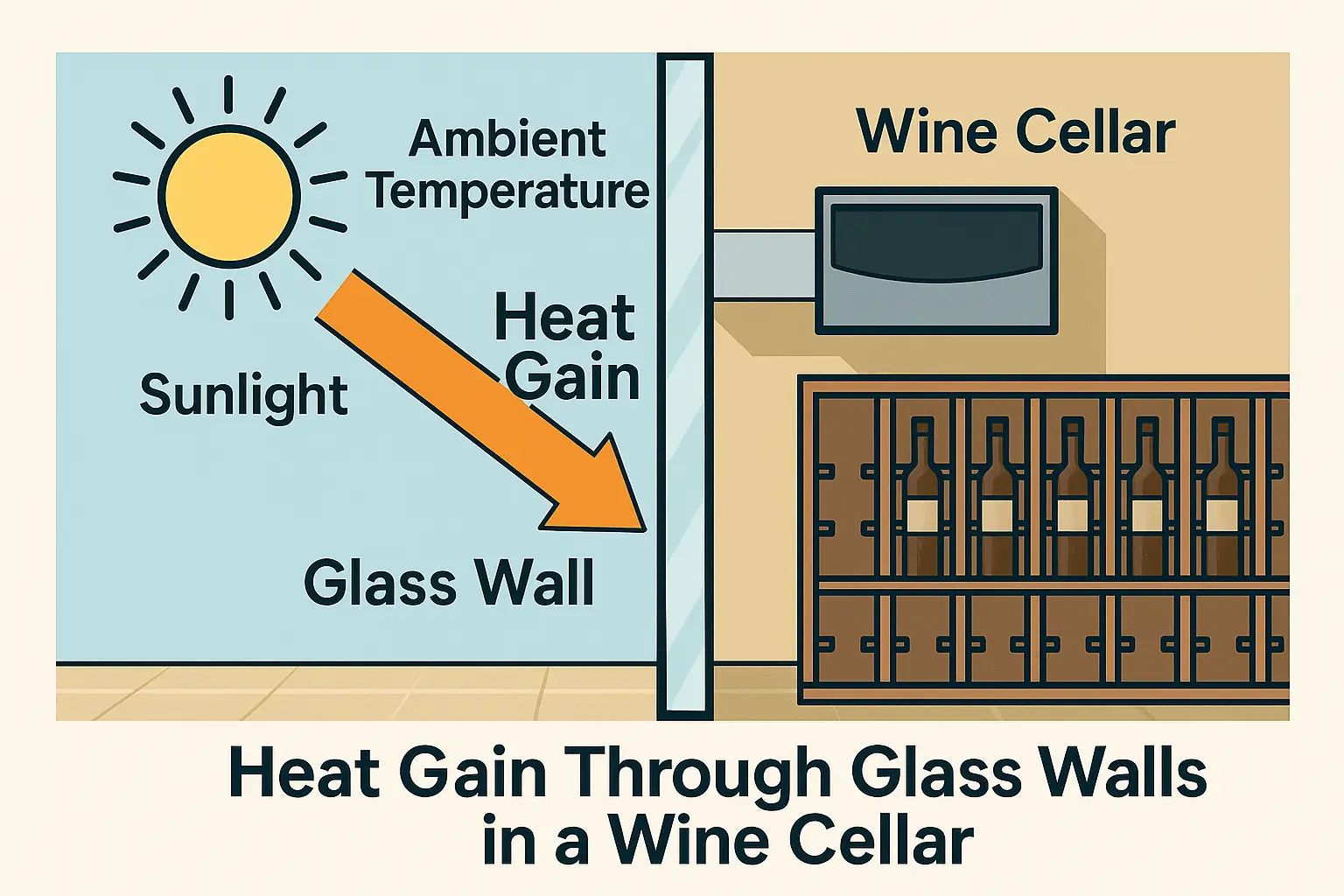
Before choosing a system, it helps to understand exactly why glass changes the cooling equation:
According to the National Glass Association, large glass surfaces can increase heat load by over 30% compared to insulated wall assemblies.
If you’re planning a modern wine room or display-focused cellar, make sure your system is engineered to handle the load. Explore options for high-performance solutions in our guide on best cooling systems for large wine cellars.
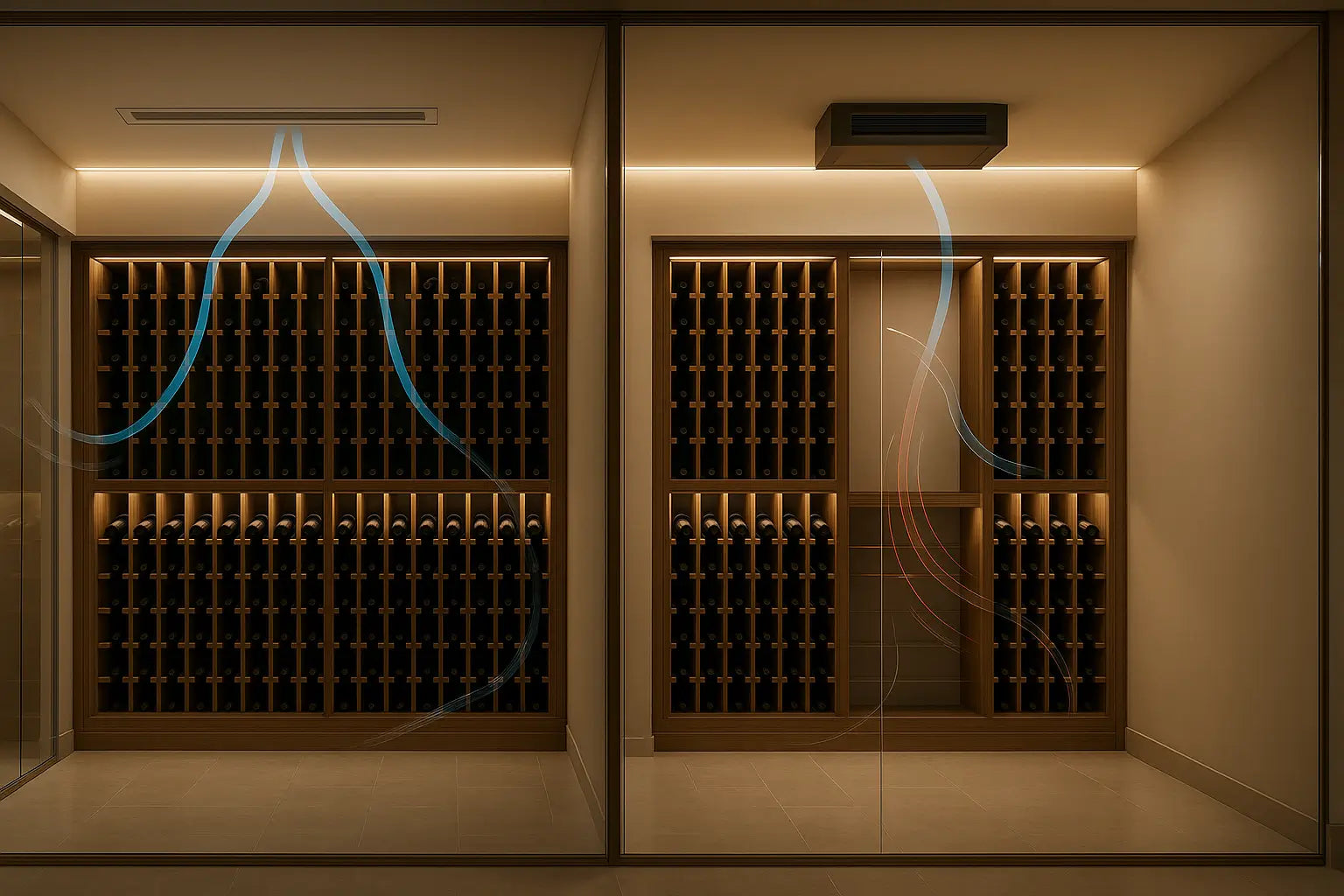
✅ Ducted systems — Place the unit in a remote mechanical space and deliver cool air through discreet ceiling grills. This approach minimizes noise and preserves clean sightlines.
✅ Split systems — Position the condenser outdoors and install a sleek evaporator unit inside the cellar for flexible airflow and low visual impact.
❌ Avoid self-contained systems unless absolutely necessary. These units introduce visible equipment, added noise, and warm air discharge into the surrounding space — all of which undermine aesthetics and performance.
Pro tip: Choose a system rated at 25–50% higher BTU capacity than standard sizing formulas recommend. This accounts for the significantly higher heat load from glass surfaces and metal framing.
Want to see real-world applications and sizing examples? Explore our detailed guide on how to cool a large wine cellar.
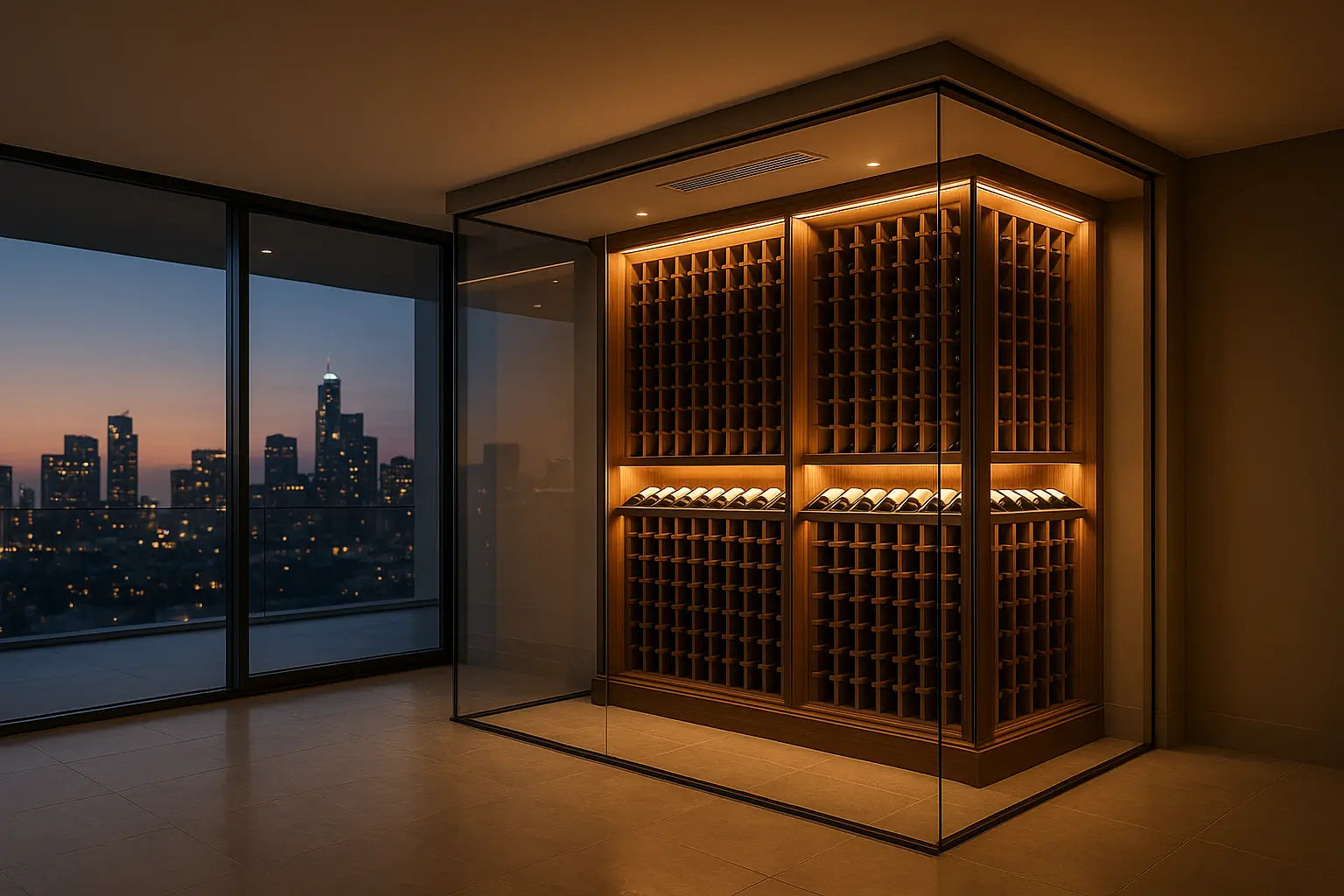
A client in Manhattan designed a 900 cu ft glass-enclosed cellar between the dining room and kitchen. Challenges included:
Our team recommended a high-BTU ducted system with dual-supply vents. The result? Silent performance, consistent 55°F, and no visible equipment inside the cellar.
For more on how vapor protection plays a role in projects like this, read our guide to vapor barrier planning for wine cellars.
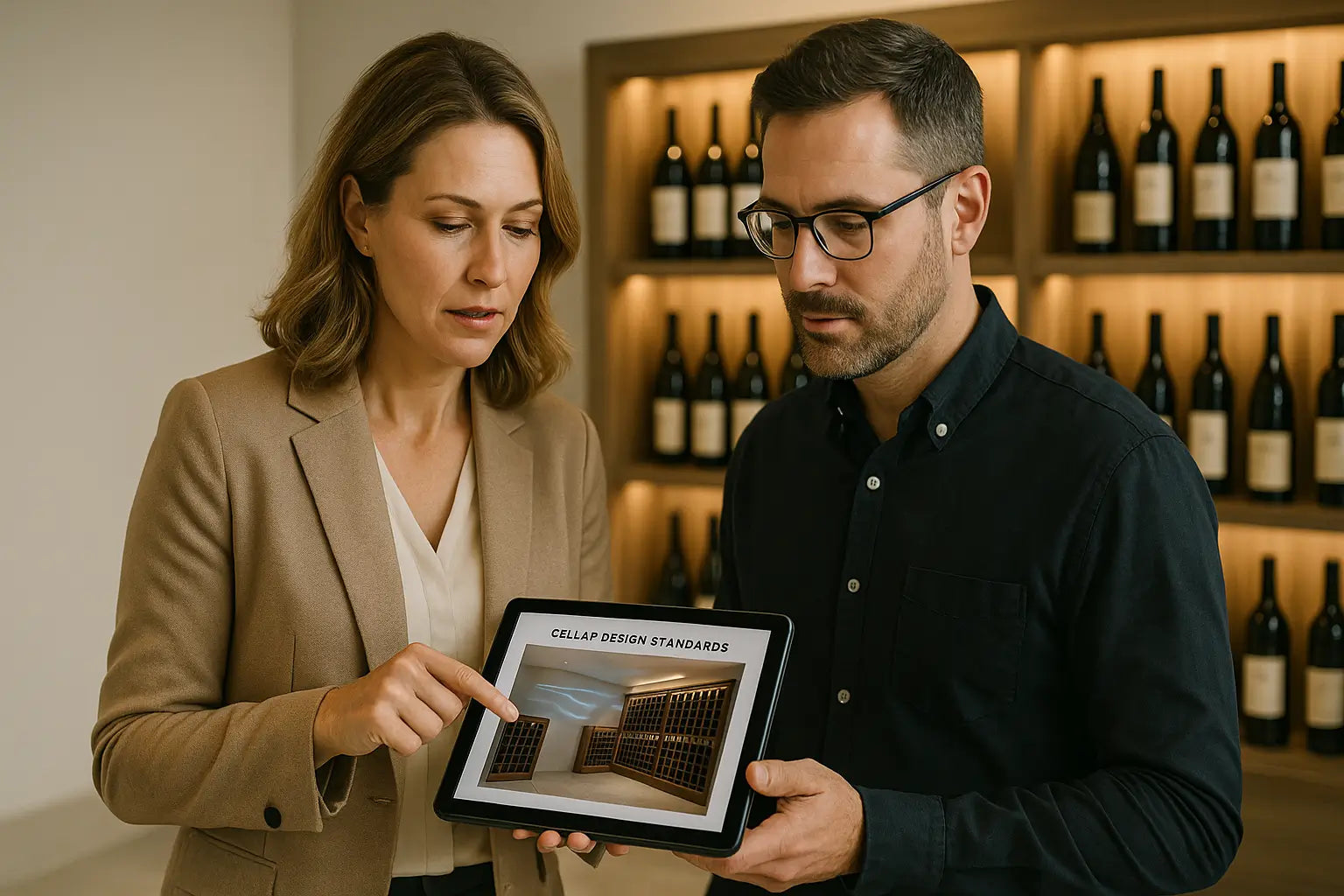
📞 Call 1 (800) 949-9904 to speak with a product advisor
📩 Or email support@wineguardiandealer.com to book your free planning consult
As an authorized Wine Guardian Dealer, we’ll help you select the right system based on size, design, and environment.
Because it transfers heat faster and lacks insulation.
Yes — it helps reduce solar heat gain and protects labels.
It can help, but also changes the look of your cellar.
Absolutely. Plan for at least 25% more BTU than standard.
🛒Shop our most-loved Wine Guardian cooling systems today.
🛠️Protect your wine with the most trusted systems on the market.
❤️Tested, reviewed, and loved by serious collectors like you.